Abstract
A study was carried out to determine whether the preexisting decline in mortality rates from infectious diseases accelerated after the introduction of antibiotic and chemotherapeutic drugs. Linear regression curves showed that in Sweden mortality rates declined faster in septicemia, syphilis, and non-memingococcal meningitis after the introduction of these drugs. By contrast, for the ten other infectious diseases studied, (scarlet fever, erysipelas, acute rheumatic fever, puerperal sepsis, meningococcal infection, bronchitis, pneumonia, tuberculosis, typhoid fever, and acute gastroenteritis) no such accelerated decline in mortality could be detected. The findings suggest that antibiotic and chemotherapeutic drugs have not had the dramatic effect of the mortality of infectious diseases popularly attributed to them.
Full text
PDF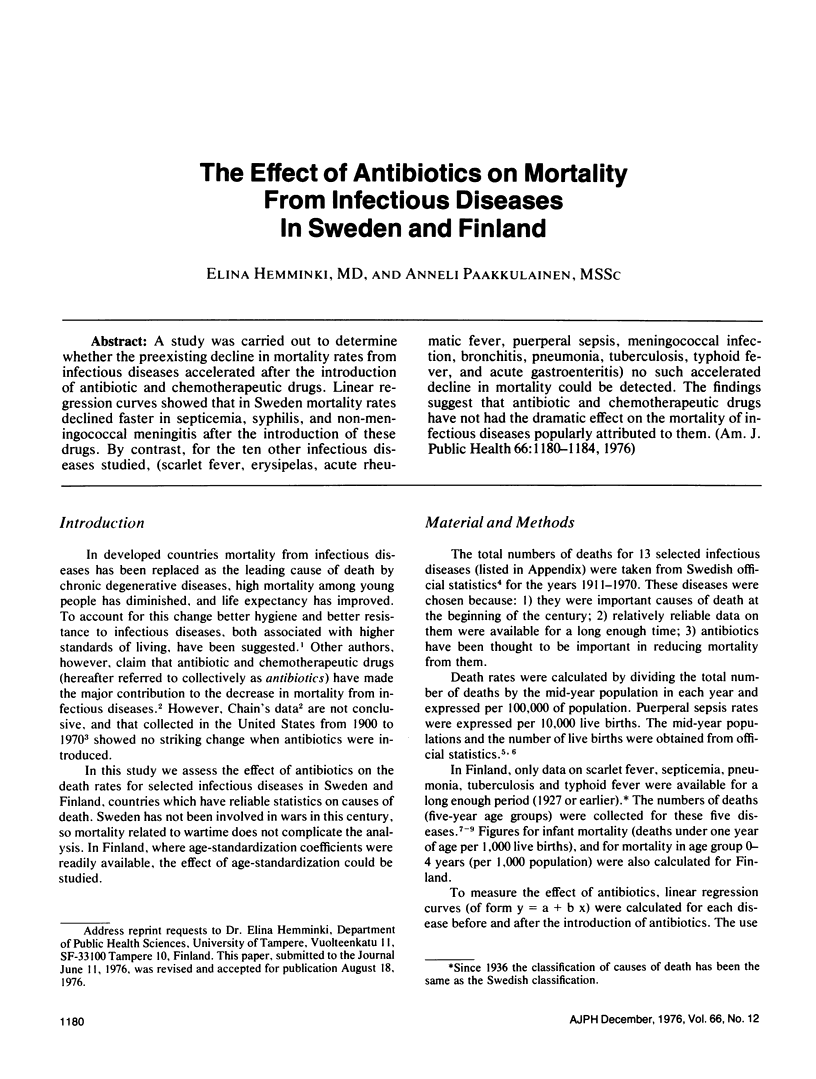
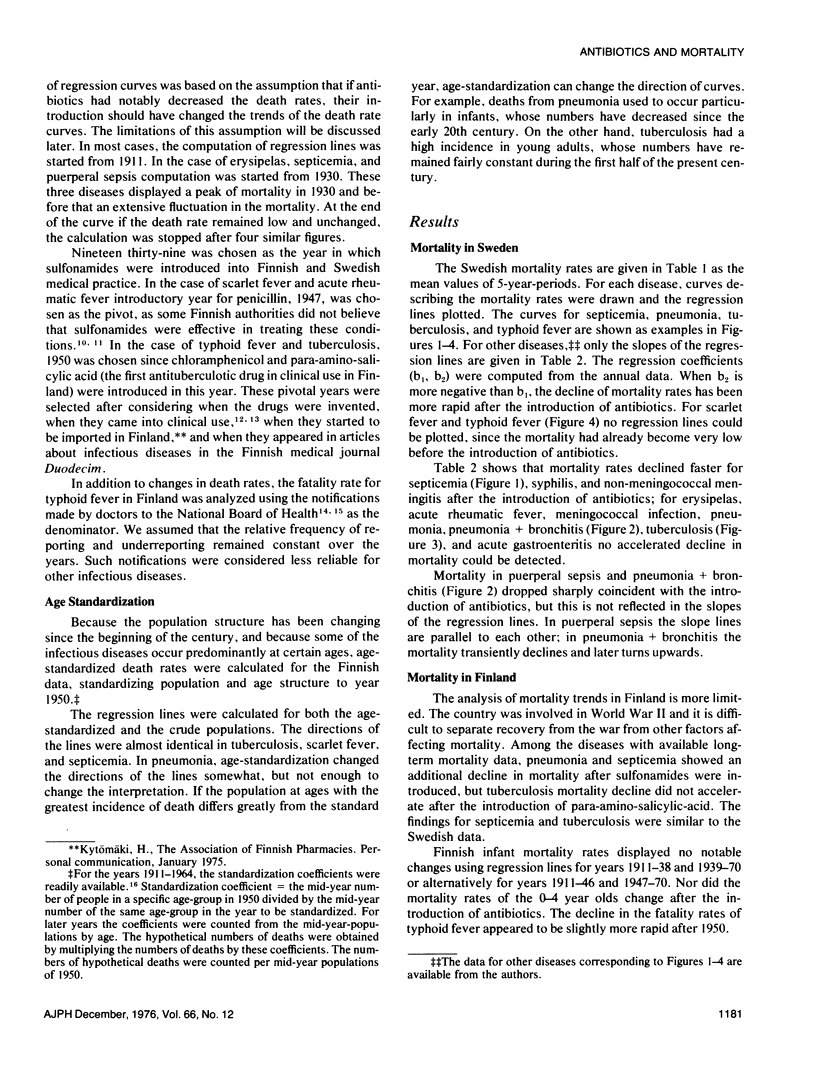
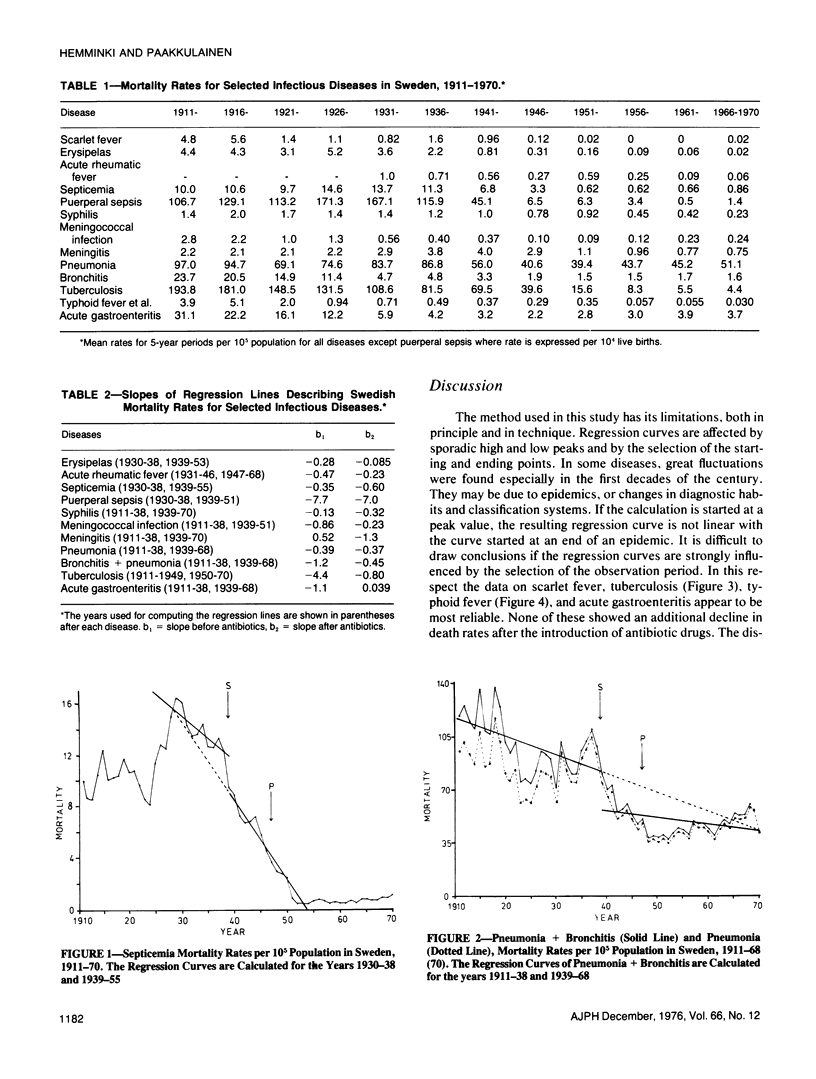
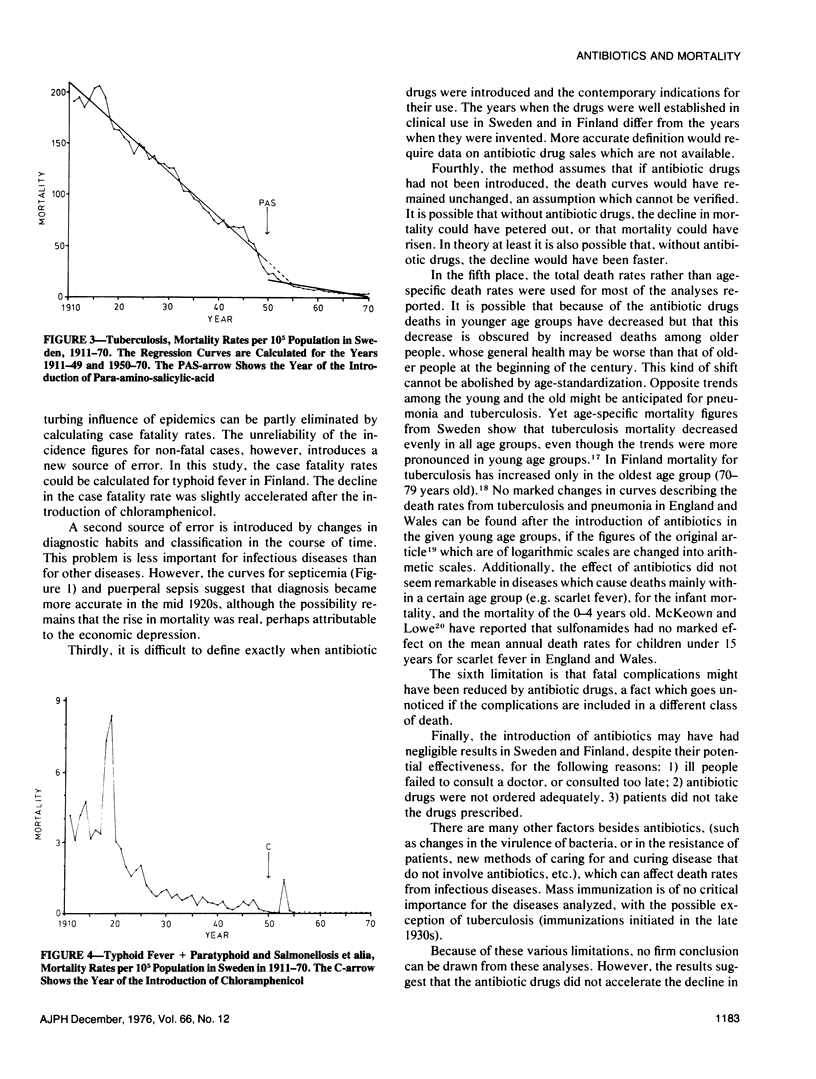
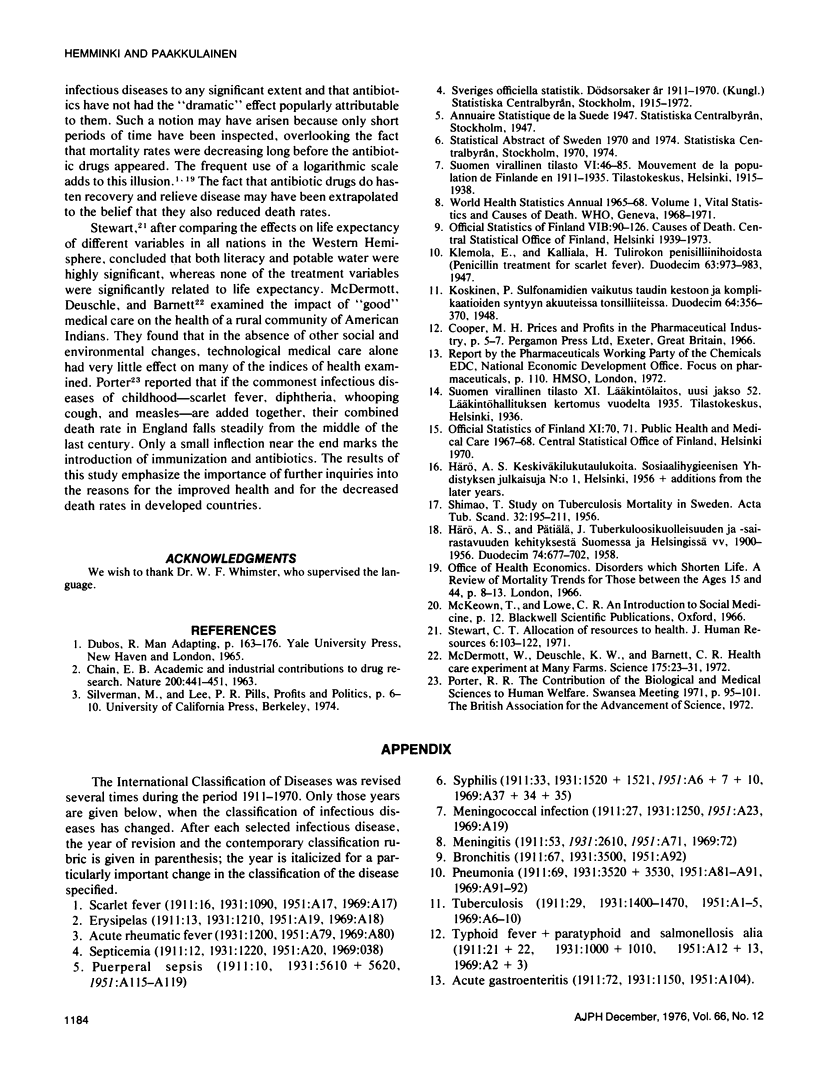
Selected References
These references are in PubMed. This may not be the complete list of references from this article.
- CHAIN E. B. ACADEMIC AND INDUSTRIAL CONTRIBUTIONS TO DRUG RESEARCH. Nature. 1963 Nov 2;200:441–451. doi: 10.1038/200441a0. [DOI] [PubMed] [Google Scholar]
- HARO A. S., PATIALA J. Tuberkuloosikuolleisuuden ja -sairastuvuuden kehityksestä Suomessa ja Helsingissä vv. 1900-1956. Duodecim. 1958;74(12):677–702. [PubMed] [Google Scholar]
- McDermott W., Deuschle K. W., Barnett C. R. Health care experiment at Many Farms. Science. 1972 Jan 7;175(4017):23–31. doi: 10.1126/science.175.4017.23. [DOI] [PubMed] [Google Scholar]
- SHIMAO T. Study on tuberculosis mortality in Sweden. Acta Tuberc Scand. 1956;32(2):195–211. [PubMed] [Google Scholar]


